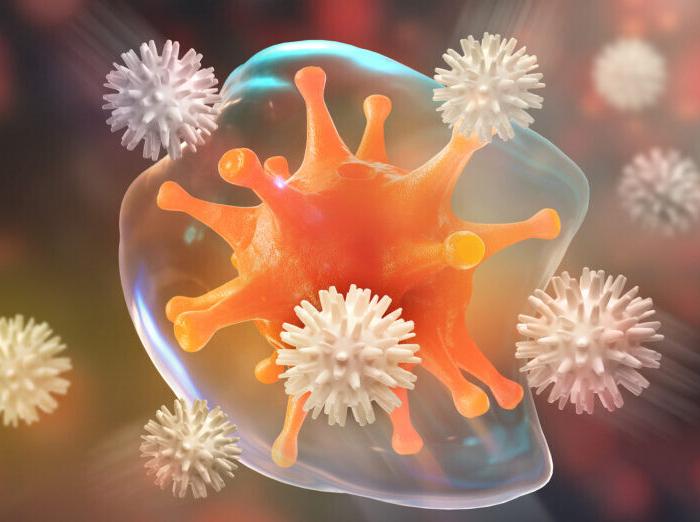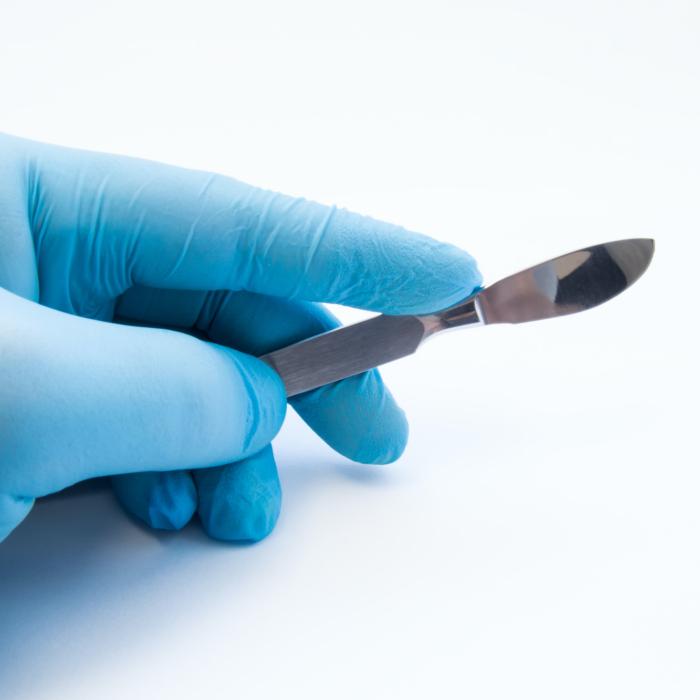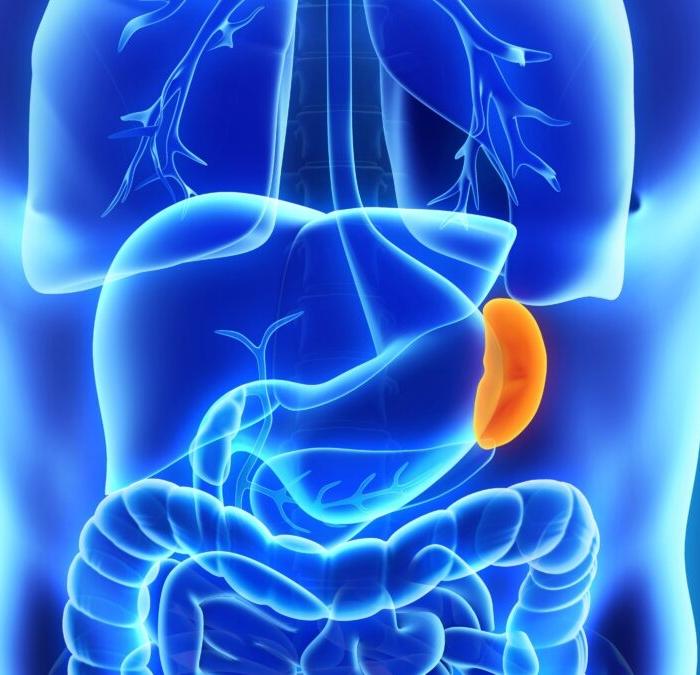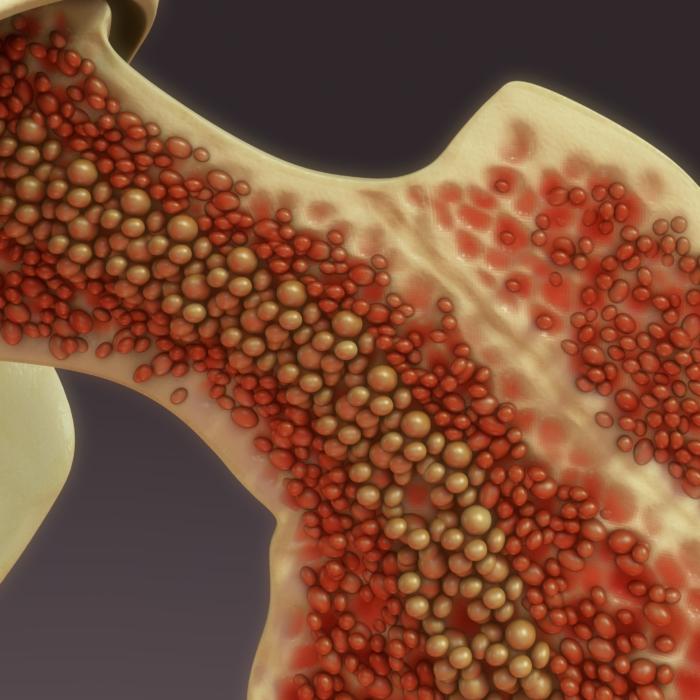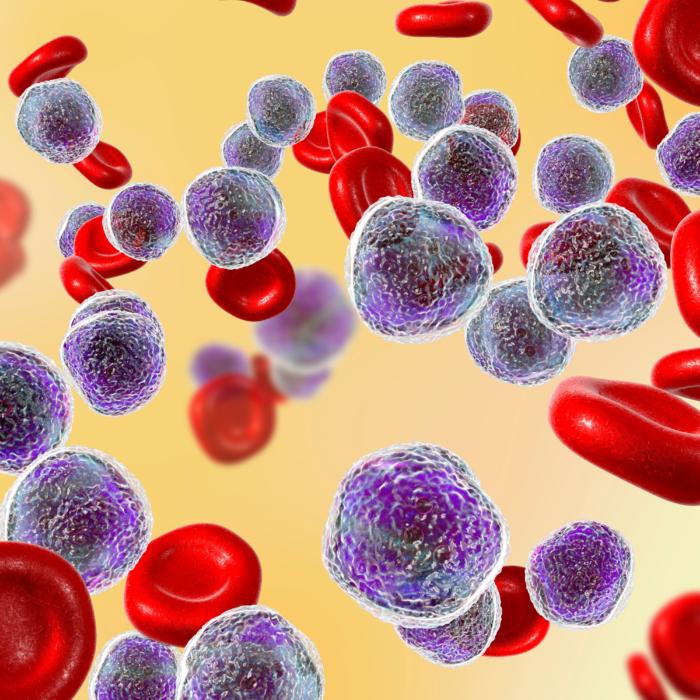Our tonsils are soft, oval-shaped nodes, neither flesh nor fat, that stand like bodyguards at the place where the outside enters our insides. They work tirelessly to protect us against viruses and germs that enter through the air we breathe and the food we eat.

Summary of Key Facts
- Tonsils are a part of the lymphatic system that form a ring-like gatekeeper structure in the throat.
- Because of their strategic importance in our immune system, tonsils have both “gatekeeper” and “messenger” roles.
- Tonsillitis is a process of training and maturation of the tonsils.
- Medical treatment of tonsillitis with antibiotics can have limitations and side effects.
- Natural herbs are beneficial in reducing the symptoms of tonsillitis.
- Combining antibiotics with natural herbal therapies may have a synergistic effect.
- There are a few ways to protect the tonsils.
Tonsils as Gatekeepers
The tonsil area is rich in immune cells.When viruses and bacteria slip through your mouth and nose, the tonsils stand ready, 24 hours a day, guarding the throat—the gate of your body.
The palatine tonsils have about 15 small spaces called crypts, which increase their surface area to increase the capacity to filter external pathogens.
The adenoid, also called the pharyngeal tonsil, is a mass of lymphatic tissue similar to the palatine tonsils that hang from the upper part of the back of the nasal cavity, and along with other parts of the tonsils, can’t be seen. The adenoid tends to shrink after early childhood, and by the teenage years, often disappears almost entirely.

The tonsils’ main job is to trap viruses or germs from the food we eat and the air we inhale. The tonsil area normally gets more blood flow to help fight off common infections.
In short, the tonsils’ role is to protect their territory—you. If these gatekeepers doze off, the enemy, such as a virus, will sneak in. The tonsils use perceptive senses to guard against invaders. They can identify and eliminate the COVID-19 virus and its variants and thousands of other viruses.
We’ve all experienced the power of our tonsils. A common sign of sickness is a sore throat or discomfort in the throat. While we may view it as a minor ailment, we may not be aware that it’s the tonsils warning us of an immune breach and that we should prepare ourselves for battle.
Essential Role in the Immune System
Our tonsils have a layer of epithelial cells that serve as the front-line signal cells detecting and clearing foreign bodies.There are many specifically designed immune cells specialized in different functions. For example, some cells capture and absorb the antigens produced by viruses and bacteria, some send signals to others, some are good at killing a virus directly, and others can produce antibodies.
Antibodies, a kind of protein, can bind to specific featured fragments of proteins on the surface of a virus. They can neutralize and clear the virus from the body.
Our tonsils house many such cells that can generate various types of antibodies (e.g., IgA, IgD, IgE, IgG, and IgM). Different types of antibodies are like siblings in one big family, generated at various times during an infection or under abnormal conditions, each targeting different cells or tissues.
Tonsillitis: Process of Learning to Become Stronger
During an exhausting battle against viruses or bacteria, our tonsils may become enlarged, swollen, and red. We will often feel this in the form of discomfort in the throat area. Those are typical signs of tonsillitis. The swelling is caused by a buildup of lymph fluid, viruses, bacteria, and immune cells, and the redness results from increased blood flow to the area.Tonsillitis frequently occurs during our younger years, when our tonsils aren’t yet strong enough to combat viruses and bacteria effectively, despite their best efforts. Developing tonsillitis doesn’t necessarily mean our immune system is weak. In fact, it often suggests our immune system is developing and becoming stronger as it learns to fight these invaders.
Tonsillitis Treatments and Their Limitations
When the tonsils are exhausted, any method that can help clear viruses or germs, reduce inflammation, or boost immunity will help them recover.In addition to antibiotics and other medical interventions, natural herbs can help the tonsils fight back and heal. Combining different forms of therapy may result in a synergistic effect because they work through different mechanisms of action.
Synergistic Ways to Support the Tonsils
Echinacea With Azithromycin
A prospective randomized, controlled study of 300 children with recurrent tonsillitis aimed to measure the effectiveness of prophylactic treatments to prevent recurrence. The study found that the combined use of commercially available echinacea with the antibiotic azithromycin produced better results than azithromycin alone. Azithromycin has been reported to cause adverse events, including lethal heart events, so caution is necessary.Green Tea
Green tea is a rich source of antioxidants with anti-inflammatory properties. Green tea can also help relieve sore throat symptoms, common of pharyngitis (inflammation of the back of the throat), which often accompanies tonsillitis. Researchers reported in Anesthesiology and Pain Medicine that gargling green tea helps ward off sore throat symptoms in postoperative patients.Licorice Root, Barberry Root, Thyme, and Oregano
An in vitro (test tube) study investigated hot water infusions of 13 different herbs that can help defend against streptococcal-caused pharyngitis, the most common type of bacterial infection in the throat. Pharyngitis and tonsillitis are closely linked conditions that often share the same cause and treatment. The most effective herbs for pharyngitis according to the study include:- Licorice root, the fastest and most potent
- Barberry root
- Thyme
- Oregano flowering shoots
Dandelion, Mint, and Skullcap
One systematic review, published in the esteemed Cochrane Database of Systematic Reviews, analyzed 12 randomized controlled trials assessing Chinese herbal medicines for the treatment of sore throat and tonsillitis involving 1,954 participants. The following remedies were found to be more effective than antibiotics in their studies.Dandelion was more effective than sodium penicillin for acute purulent tonsillitis.
- Mint
- Skullcap
- Wild chrysanthemum
- Honeysuckle
- Houttuynia cordata
Sho-Saiko-To
A recipe called “Sho-saiko-to“ has long been recorded in traditional Chinese medicine textbooks to treat pharyngitis or tonsillitis. The recipe is composed of six herbs:- Bupleurum root
- Scutellaria root
- Ginseng root
- Pinellia tuber
- Glycyrrhiza root
- Ginger rhizome
Chinese Herbs
A meta-analysis of 110 randomized controlled trials looked at 12,152 patients with acute tonsilitis. It found that combining Chinese herbal injections with Western medicine resulted in an 89.5 percent improvement in clinical effectiveness, reductions in time to relieve sore throat, red and swollen tonsils, and tonsillar exudate ranging from 76.8 percent to 94.8 percent, and had an incidence of adverse reactions of less than 4.62 percent.- Forsythia suspensa
- Vahl
- Lonicera japonica Thunb
- Scutellaria baicalensis Georgi (key ingredient; Baicalin)
- Isatis tinctoria L
- Gardenia jasminoides J.Ellis
Tips to Protect Tonsils
Because tonsils play such a significant role in defense against viruses and germs, maintaining and optimizing their function is advisable.- One simple suggestion is to keep our living spaces clean and well-ventilated to reduce the risk of exposure. Additionally, avoiding smoke is crucial, as toxins in smoke are harmful.
- Maintaining proper hydration is also a critical factor in promoting throat health. Adequate air humidity and sufficient water intake can help keep our tonsils healthy.
- Food and drink are other sources of pathogens that can affect throat health, as everything we consume passes through this area. To minimize the risk of exposure, eat organic, nutritious, whole foods. Eating plenty of vegetables and fruits supports the basic functioning of our immune system.
◇ References
Baugh, R. F., Archer, S. M., Mitchell, R. B., Rosenfeld, R. M., Amin, R., Burns, J. J., Darrow, D. H., Giordano, T., Litman, R. S., Li, K. K., Mannix, M. E., Schwartz, R. H., Setzen, G., Wald, E. R., Wall, E., Sandberg, G., Patel, M. M., & American Academy of Otolaryngology-Head and Neck Surgery Foundation (2011). Clinical practice guideline: tonsillectomy in children. Otolaryngology—head and neck surgery: official journal of American Academy of Otolaryngology-Head and Neck Surgery, 144(1 Suppl), S1–S30. https://doi.org/10.1177/0194599810389949Meegalla N, Downs BW. Anatomy, Head and Neck, Palatine Tonsil (Faucial Tonsils) [Updated 2022 Jun 11]. In: StatPearls [Internet]. Treasure Island (FL): StatPearls Publishing; 2022 Jan-. Available from: https://www.ncbi.nlm.nih.gov/books/NBK538296/#
Bin, NR., Prescott, S.L., Horio, N. et al. An airway-to-brain sensory pathway mediates influenza-induced sickness. Nature (2023). https://doi.org/10.1038/s41586-023-05796-0
Drew L. (2023). How the brain senses a flu infection - and orders the body to rest. Nature, 10.1038/d41586-023-00675-0. Advance online publication. https://doi.org/10.1038/d41586-023-00675-0
von Gaudecker, B., & Müller-Hermelink, H. K. (1982). The development of the human tonsilla palatina. Cell and tissue research, 224(3), 579–600. https://doi.org/10.1007/BF00213754
McClory S, Hughes T, Freud AG, Briercheck EL, Martin C, Trimboli AJ, Yu J, Zhang X, Leone G, Nuovo G, Caligiuri MA. Evidence for a stepwise program of extrathymic T cell development within the human tonsil. J Clin Invest. 2012 Apr;122(4):1403-15. doi: 10.1172/JCI46125.
Tai, F. W. D., & McAlindon, M. E. (2021). Non-steroidal anti-inflammatory drugs and the gastrointestinal tract. Clinical medicine (London, England), 21(2), 131–134. https://doi.org/10.7861/clinmed.2021-0039.
Kiyatkin E. A. (2019). Respiratory depression and brain hypoxia induced by opioid drugs: Morphine, oxycodone, heroin, and fentanyl. Neuropharmacology, 151, 219–226. https://doi.org/10.1016/j.neuropharm.2019.02.008.
Abdel-Naby Awad OG. Echinacea can help with Azithromycin in prevention of recurrent tonsillitis in children. Am J Otolaryngol. 2020 Jul-Aug;41(4):102344. doi: 10.1016/j.amjoto.2019.102344.
Huang, Y., Wu, T., Zeng, L., & Li, S. (2012). Chinese medicinal herbs for sore throat. The Cochrane database of systematic reviews, (3), CD004877. https://doi.org/10.1002/14651858.CD004877.pub3
Zaroff JG, Cheetham TC, Palmetto N, et al. Association of Azithromycin Use With Cardiovascular Mortality. JAMA Netw Open. 2020;3(6):e208199. doi:10.1001/jamanetworkopen.2020.8199
Goto, F., Asama, Y., & Ogawa, K. (2010). Sho-saiko-to-ka-kikyo-sekko as an alternative treatment for chronic tonsillitis to avoid surgery. Complementary therapies in clinical practice, 16(4), 216–218. https://doi.org/10.1016/j.ctcp.2010.02.006
Jafari H, Ariaeifar MR, Yazdani Charati J, Soleimani A, Nasiri Formi E. The Effect of Green Tea Gargle Solution on Sore Throat After Coronary Artery Bypass Grafting: A Randomized Clinical Trial. Anesth Pain Med. 2016 May 9;6(3):e32108. doi: 10.5812/aapm.32108.
Wijesundara NM, Rupasinghe HPV. Herbal Tea for the Management of Pharyngitis: Inhibition of Streptococcus pyogenes Growth and Biofilm Formation by Herbal Infusions. Biomedicines. 2019; 7(3):63. https://doi.org/10.3390/biomedicines7030063
El-Anwar, M. W., Elzayat, S., & Fouad, Y. A. (2020). ENT manifestation in COVID-19 patients. Auris, nasus, larynx, 47(4), 559–564. https://doi.org/10.1016/j.anl.2020.06.003
Capriotti, V., Mattioli, F., Guida, F., Marcuzzo, A. V., Lo Manto, A., Martone, A., Molinari, G., Fabbris, C., Menegaldo, A., Calvanese, L., Latini, G., Cingolani, C., Gradoni, P., Boscolo Nata, F., De Sisti, C., Selle, V., Leone, G., Indelicato, P., Pilolli, F., Mevio, N., … Tirelli, G. (2021). COVID-19 in the tonsillectomised population. Acta otorhinolaryngologica Italica : organo ufficiale della Societa italiana di otorinolaringologia e chirurgia cervico-facciale, 41(3), 197–205. https://doi.org/10.14639/0392-100X-N1436
Descamps, G., Verset, L., Trelcat, A., Hopkins, C., Lechien, J. R., Journe, F., & Saussez, S. (2020). ACE2 Protein Landscape in the Head and Neck Region: The Conundrum of SARS-CoV-2 Infection. Biology, 9(8), 235. https://doi.org/10.3390/biology9080235
Qin, L., Zhang, Z., Guo, M., Zhang, Q., Wang, Q., Lu, Z., Zhao, H., Liu, Y., Fu, S., Wang, M., & Gao, X. (2016). Plasma metabolomics combined with lipidomics profiling reveals the potential antipyretic mechanisms of Qingkailing injection in a rat model. Chemico-biological interactions, 254, 24–33. https://doi.org/10.1016/j.cbi.2016.05.022
Gao, X., Guo, M., Peng, L., Zhao, B., Su, J., Liu, H., Zhang, L., Bai, X., & Qiao, Y. (2013). UPLC Q-TOF/MS-Based Metabolic Profiling of Urine Reveals the Novel Antipyretic Mechanisms of Qingkailing Injection in a Rat Model of Yeast-Induced Pyrexia. Evidence-based complementary and alternative medicine : eCAM, 2013, 864747. https://doi.org/10.1155/2013/864747
Shang, W., Wang, X. S., Zou, D. Y., Zhang, Z. N., Liao, X. R., & Yuan, J. (2013). Zhongguo Zhong xi yi jie he za zhi Zhongguo Zhongxiyi jiehe zazhi = Chinese journal of integrated traditional and Western medicine, 33(4), 506–509.
Tang, Y., Wang, Z., Huo, C., Guo, X., Yang, G., Wang, M., Tian, H., Hu, Y., & Dong, H. (2018). Antiviral effects of Shuanghuanglian injection powder against influenza A virus H5N1 in vitro and in vivo. Microbial pathogenesis, 121, 318–324. https://doi.org/10.1016/j.micpath.2018.06.004
Su, H. X., Yao, S., Zhao, W. F., Li, M. J., Liu, J., Shang, W. J., Xie, H., Ke, C. Q., Hu, H. C., Gao, M. N., Yu, K. Q., Liu, H., Shen, J. S., Tang, W., Zhang, L. K., Xiao, G. F., Ni, L., Wang, D. W., Zuo, J. P., Jiang, H. L., … Xu, Y. C. (2020). Anti-SARS-CoV-2 activities in vitro of Shuanghuanglian preparations and bioactive ingredients. Acta pharmacologica Sinica, 41(9), 1167–1177. https://doi.org/10.1038/s41401-020-0483-6
Chen, X., Howard, O. M., Yang, X., Wang, L., Oppenheim, J. J., & Krakauer, T. (2002). Effects of Shuanghuanglian and Qingkailing, two multi-components of traditional Chinese medicinal preparations, on human leukocyte function. Life sciences, 70(24), 2897–2913. https://doi.org/10.1016/s0024-3205(02)01541-2
Windfuhr, J. P., Toepfner, N., Steffen, G., Waldfahrer, F., & Berner, R. (2016). Clinical practice guideline: tonsillitis I. Diagnostics and nonsurgical management. European archives of oto-rhino-laryngology : official journal of the European Federation of Oto-Rhino-Laryngological Societies (EUFOS) : affiliated with the German Society for Oto-Rhino-Laryngology - Head and Neck Surgery, 273(4), 973–987. https://doi.org/10.1007/s00405-015-3872-6
Bird, J. H., Biggs, T. C., & King, E. V. (2014). Controversies in the management of acute tonsillitis: an evidence-based review. Clinical otolaryngology : official journal of ENT-UK ; official journal of Netherlands Society for Oto-Rhino-Laryngology & Cervico-Facial Surgery, 39(6), 368–374. https://doi.org/10.1111/coa.12299
Morad, A., Sathe, N. A., Francis, D. O., McPheeters, M. L., & Chinnadurai, S. (2017). Tonsillectomy Versus Watchful Waiting for Recurrent Throat Infection: A Systematic Review. Pediatrics, 139(2), e20163490. https://doi.org/10.1542/peds.2016-3490



